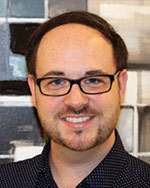Removing barriers to oral health access: A multilinked approach
 Zachary Brian, DMD |
While children and adolescents in the United States have shown substantial improvement in terms of oral health in recent years, the same cannot be said for adults.
According to a 2019 report by the Centers for Disease Control and Prevention (CDC), 1 in 4 U.S. adults suffers from untreated tooth decay. CDC data also show an increase in the number of seniors with oral decay — but what these numbers don’t show is why. A partial explanation that is particularly relevant to rural America is access to basic dental care, which has a critical effect on overall health.
According to the American Dental Association, notable barriers to accessing oral health care include general cost, difficulty finding a dentist, inconvenient location/time, and no perceived need. To improve oral health outcomes, it is necessary to understand and address the barriers that prevent individuals from accessing services.
In conversation with Zachary Brian, DMD, program director for the Foundation for Health Leadership and Innovation’s North Carolina Oral Health Collaborative, we discuss some of the ways these barriers can be addressed, including policy and systems changes and integrated care systems.
Allowing practitioners to work at the top of their licensures
Federal, state, and local policies and regulations drive conversations around health care as they determine the scope of practice and ability for many practitioners, clinics, and the overall health system. Currently, the regulations in the Dental Practice Act vary significantly from state to state.
Brian believes it is essential for care providers to “work at the top of their licensures to address these barriers.” This is particularly important in rural areas with workforce shortages, where restrictive regulatory environments prevent many providers from being able to offer necessary care. While working in New Haven, Conn., Brian saw success streamlining costs and creating a profit by revamping the workflow of a federally qualified health clinic (FQHC) with the clinic’s established practitioners.
Policy also plays a critical role in cost of dental care for both patient and provider. “While the business model and privatization of dentistry has created an unequitable environment, we as dental professionals have a [unique] opportunity,” Brian says. “Our communities depend on us to advance effective policy changes that cultivate equity over equality.”
Currently, Medicare does not include coverage of dental and oral health services. The Medicare Dental Benefit Act of 2019 would allow Medicare to cover these services, including “routine diagnostic and preventive care, basic and major dental services, and emergency care.” Brian believes passage of this legislation is key. “While we as a dental community have often focused on meeting the oral health needs of children, we must also remember the importance of serving older adults,” he says. “Without a Medicare dental benefit, many of these individuals will continue to lack access to affordable and comprehensive dental services.”
Integration of health systems: Attaching the mouth back to the body
Including oral health in general health care practices is also vital. Not only does the ability to fully integrate electronic medical record (EMR) systems drive a comprehensive approach to patient care, it also helps intertwine health professionals’ interactions. Far too often the mouth is not seen as an integral part of whole-person health and well-being. As more studies demonstrate strong correlations between poor oral health and suboptimal general health, it is critical to have a system in place to ensure easy exchange of information, such as integrated health records.
While Brian was in Connecticut, he was part of the initial launch of a new EMR system with his FQHC and Yale University. This fully integrated health information system gives all health providers seamless access to patient information, as well as the ability to communicate in real time. The new system allows provider access to all patient chart notes, lab results, and procedural coding. According to Brian, this was a critical component in providing comprehensive care and disease management.
Brian also notes that one important aspect is the EMR’s ability to link to larger health systems outside of the FQHC. The platform used by Brian and his colleagues was connected to the Yale health care system, including their emergency department. Brian says this was a crucial step in addressing the needs of the New Haven community. He and his dental staff were able to receive updates and reports from ED patient discharge notations. A dental care coordinator was assigned to community outreach and would personally connect with these patients to offer a dental followup or new appointment with their health center.
Taking health care to the patient
As medical technology continues to evolve, telehealth in dentistry is emerging as a tool that practitioners in rural areas can utilize to provide access to the underserved. Brian also saw success in this facet. By taking portable equipment into schools, his team was able to “meet youth and adolescents where they were” and remove an additional barrier to care.
“It is important that as we manage the oral health needs of our rural communities, we do not lose touch with the persistent and pervasive social drivers of health,” Brian says. “Without access to oral health services in the school setting, many of those patients wouldn’t have had parents with the transportation means to bring them into the brickand- mortar site.”
“When I became a dentist, my first priority was to serve the needs of my community,” Brian adds. “Quickly it became clear that accomplishing that goal would take a multi-linked approach through effective policy reform, a focus on integrative practice, and embracing innovative approaches to breaking systemic barriers.”
As the needs and abilities of each community change, it is necessary for medical advancements to adjust as systems allow.
